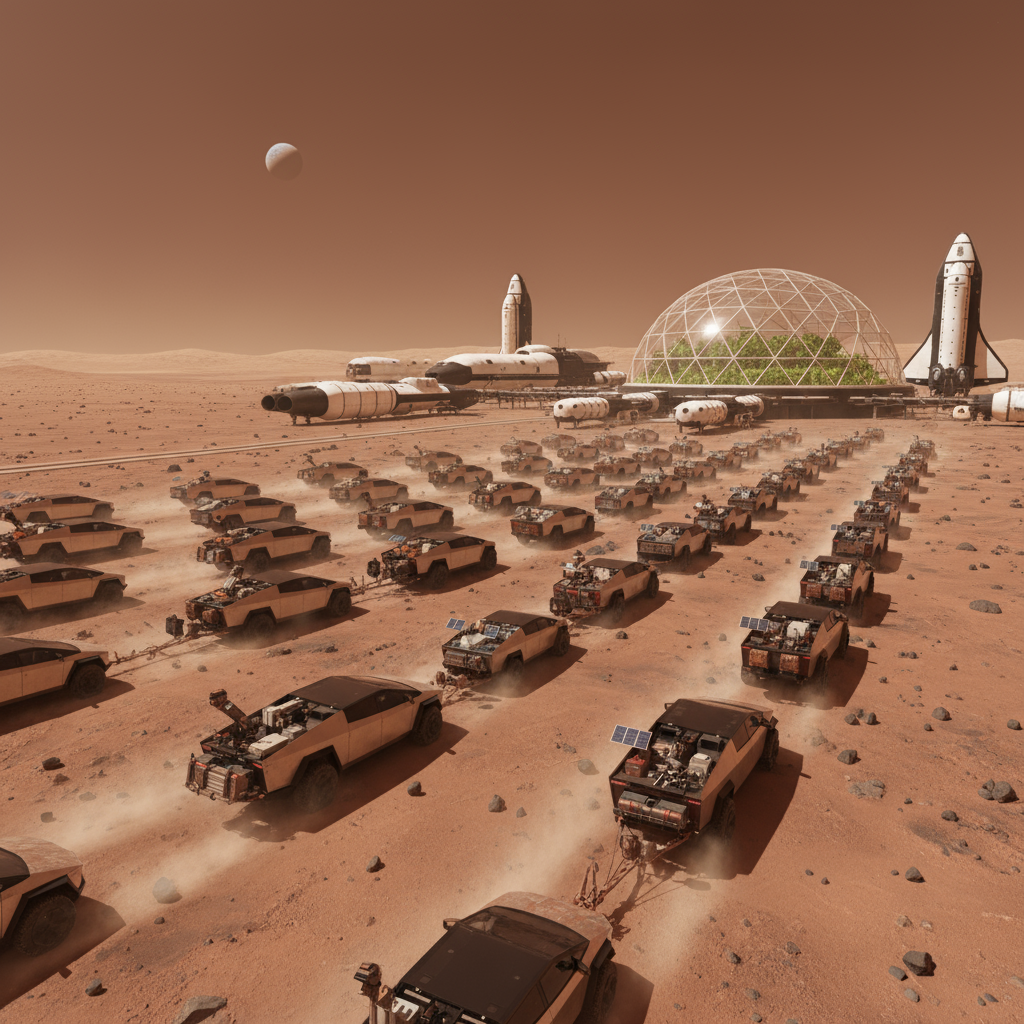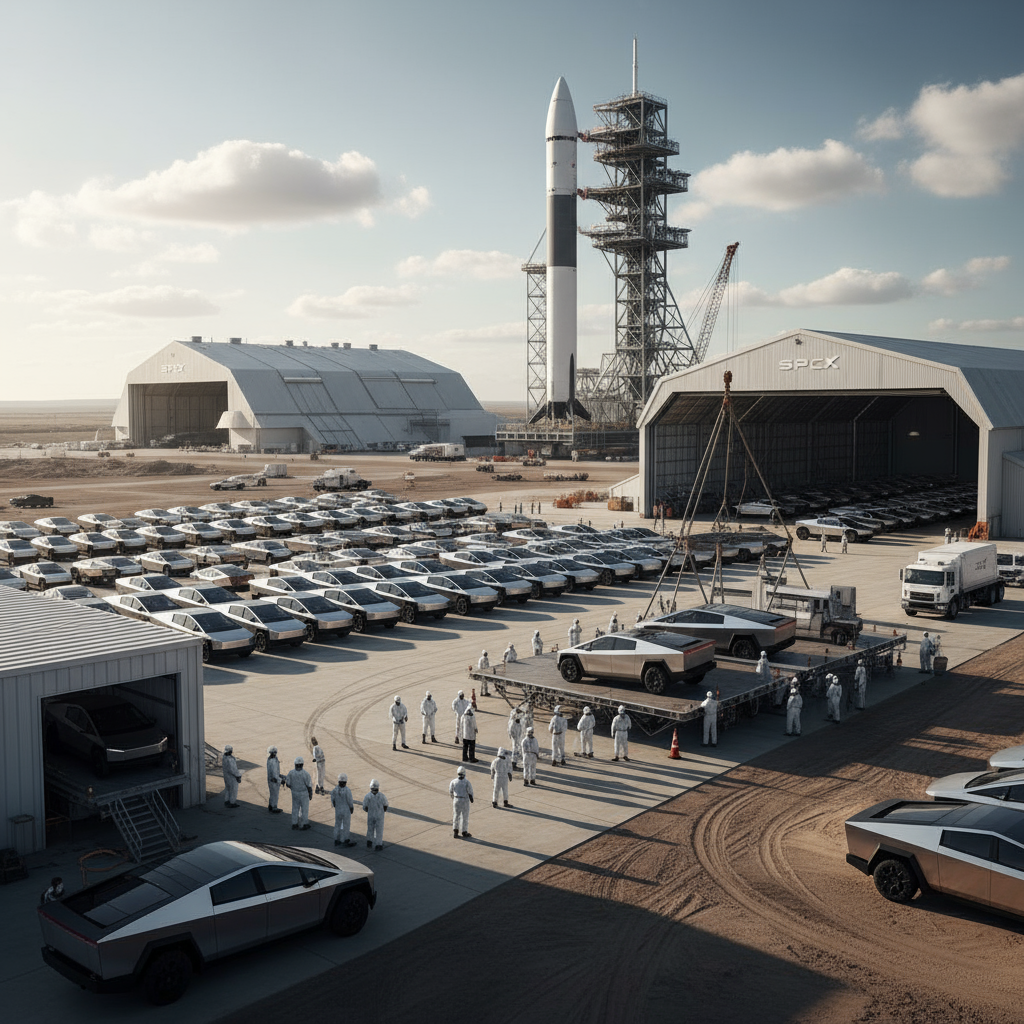From Mars Missions to Martian Mules: SpaceX Embraces the Cybertruck

The automotive and aerospace industries often feel like parallel universes, each pushing the boundaries of engineering and innovation. Yet, a recent development is blurring these lines in a surprising and highly visible way: SpaceX, the visionary rocket company led by Elon Musk, is reportedly taking delivery of hundreds, and soon thousands, of unsold Tesla Cybertrucks. This isn’t just a quirky anecdote; it signals a fascinating convergence of two of Musk’s iconic ventures, raising questions about practicality, branding, and perhaps, a glimpse into the future of industrial fleets.
Initially met with a mix of awe and skepticism, the Cybertruck’s polarizing design and innovative materials have ensured it remains a constant topic of conversation. Now, its new role as a workhorse for SpaceX adds another layer to its narrative. This move isn’t merely about offloading slow-moving inventory; it suggests a strategic decision with implications for both companies. Let’s delve into what this unexpected partnership could mean.
The Cybertruck’s Unlikely New Habitat: SpaceX Facilities

The notion of hundreds of Cybertrucks roaming SpaceX facilities, from Starbase in Texas to launch sites in Florida, is genuinely intriguing. These aren’t just any trucks; they are a statement. Their angular stainless-steel exoskeletons and unique aesthetic undoubtedly stand out amongst the more conventional Ford F-150s and other utility vehicles typically found on such sites. But beyond aesthetics, what practical needs will these Cybertrucks fulfill for SpaceX?
At the core, SpaceX operations demand robust, versatile vehicles. Launch complexes are vast, often rugged environments, requiring vehicles capable of navigating diverse terrain while transporting personnel, tools, and potentially sensitive equipment. The Cybertruck’s touted durability, impressive towing capacity, and all-wheel-drive capabilities make it a theoretically strong candidate for such roles. Imagine a Cybertruck towing a module across the Starbase assembly yard or ferrying engineers to a remote test stand. Its electric powertrain also aligns with a broader push for sustainability, even in the heavy-duty sector.
Furthermore, the vehicle’s “bulletproof” exterior, while perhaps overkill for most ground operations, speaks to a general robustness that could be advantageous in demanding environments. Impact resistance, ease of cleaning, and resistance to corrosion are practical benefits of its unique construction, especially in coastal launch sites exposed to salty air. This deployment isn’t just about moving people; it’s about deploying a tool that can withstand the rigors of rocket science on the ground.
A Symbiotic Relationship: More Than Just Logistics
This isn’t a one-way street of SpaceX merely purchasing “excess” inventory. There are significant benefits flowing in both directions, cementing the intertwined nature of Elon Musk’s enterprises. For Tesla, this represents a crucial immediate offload of vehicles. While official sales figures for the Cybertruck remain somewhat opaque, the initial production ramp-up has reportedly faced challenges. A large, guaranteed buyer like SpaceX provides a significant boost to early production numbers and helps to streamline manufacturing processes as they scale.
Beyond the immediate financial transaction, this deployment serves as a massive, real-world stress test for the Cybertruck. SpaceX facilities offer an unforgiving environment – dust, debris, heavy loads, and constant activity. Any weaknesses or design flaws in the Cybertruck will quickly become apparent under these extreme conditions. This feedback loop could be invaluable for Tesla, allowing them to refine and improve the vehicle for future consumer models. It’s essentially a high-stakes, internal quality assurance program, driven by necessity.
For SpaceX, the benefits extend beyond reliable transportation. The visual synergy is undeniable. Employing Cybertrucks throughout their operations reinforces the cutting-edge, future-forward image that both companies strive to project. It’s a powerful marketing statement without being overtly so, connecting the terrestrial innovations of Tesla directly to the extraterrestrial ambitions of SpaceX. This “brand congruency” is a hallmark of Musk’s broader vision.
The Future Fleet: What This Means for Both Companies
Looking ahead, this development could signify a shift in how large industrial companies, particularly those within Musk’s ecosystem, approach their fleet management. If the Cybertruck proves its mettle at SpaceX, it could pave the way for other industrial applications, both within and outside the Musk empire. The real-world data gathered from SpaceX’s intensive use will be a powerful testament to the Cybertruck’s capabilities, potentially influencing procurement decisions for other companies with similar heavy-duty needs.
This internal deployment also highlights Elon Musk’s unique business strategy. He frequently leverages synergies between his various companies, from Tesla Powerwalls at Starlink ground stations to reusable rocket technology informing battery development. The Cybertruck at SpaceX is another prime example of this integrated, “first-principles” approach, where resources are shared, problems are solved collaboratively, and a unified vision for a sustainable, technologically advanced future is pursued. It makes financial sense, operational sense, and even brand sense.
Conclusion: The Rocket-Powered Truck Era?
The image of Tesla Cybertrucks ferrying engineers and equipment around SpaceX launchpads is more than just an interesting headline. It’s a tangible representation of technological convergence, strategic synergy, and a bold vision for the future. For Tesla, it’s a vital, high-profile operational test and a guaranteed sale. For SpaceX, it’s a practical, robust, and visually aligned addition to their ground support infrastructure.
As hundreds, then thousands, of these futuristic pickups become embedded into the daily operations of humanity’s leading space exploration company, they will quietly, yet powerfully, redefine our expectations for industrial vehicles. The rough environments of rocket assembly and launch preparations will be the crucible in which the Cybertruck truly proves its worth, signaling that perhaps, the era of the rocket-powered truck – or at least, the rocket-company-powered truck – has well and truly begun.

